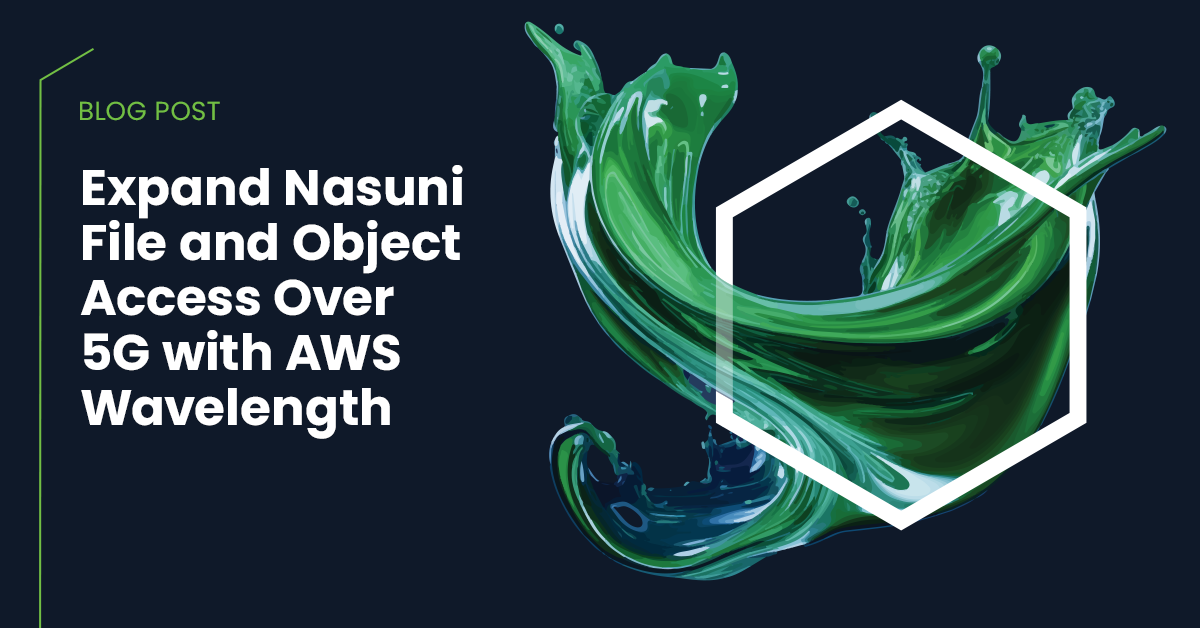Expand Nasuni File and Object Access Over 5G with AWS Wavelength
Jeff Gusky shares how customers can take advantage of Nasuni hybrid cloud solutions and AWS Wavelength to support edge applications.
June 13, 2024 | Jeff Gusky

Bringing storage and compute closer to users and apps that need performance without powerful local resources is a breakthrough in the evolution of hybrid cloud solutions. AWS Wavelength is driving tremendous value for the enterprise, and now, Nasuni is introducing support that brings new power to it. With Nasuni Edge for Amazon S3, our customers can take full advantage of AWS Wavelength to support edge applications where mobility is a requirement and there is 5G network access.
How it Works: AWS Wavelength and Nasuni Edge for Amazon S3
Before we get into the use cases, let me quickly explain how it works. At this point, AWS has deployed Wavelength Zones across North America and the globe. End users or apps running on 4G/LTE- and 5G-enabled devices access the nearest Wavelength Zone through a traditional telecom network. A virtual Nasuni edge will run on the AWS resources inside that carrier’s data center or Wavelength Zone. Think of this as a standard cloud-based Nasuni instance, only closer to the edge.
This Wavelength-based Nasuni edge operates like a normal Nasuni instance, offering the same effortless scale and built-in security. But now low-latency access to data is available to apps and end users in locations — think client or job sites, manufacturing facilities, warehouses, etc. — that don’t have local, on-site resources. Plus, because it’s so close, and those end users don’t need to connect to a Nasuni edge at another office or cloud region, it is fast.
SLED, Construction, Manufacturing, Health Informatics & More
Think about project managers on construction sites running custom applications on their iPads. With Nasuni Edge for Amazon S3 and Wavelength, that app can collect and share data directly, via a low-latency 5G bandwidth connection, into a Nasuni appliance within the EC2 resources in that zone. The end user can work without annoying delays, and data is rapidly shared back to the region and the company as a whole.
Municipalities and organizations relying on surveillance and other video footage can stream directly to the cloud through a Wavelength Zone. Wearable healthcare devices and health informatics tools can stream data to the cloud for faster analysis, allowing apps or healthcare providers to flag troubling changes in vital signs earlier than before. Remote manufacturing plants and warehouses with IoT devices can store, protect, and share collected data with the broader organization faster.
The Evolution of Hybrid Cloud Solutions
The potential use cases extend beyond these select examples. You’re bringing the scale and performance of the cloud to more locations. And you’re doing so in a way that integrates with your existing technology. As an organization, you will experience a level of consistency from cloud to edge that hasn’t been possible until now.
Part of the appeal of hybrid cloud storage is that you get the best of both worlds—the scale of object storage and the performance of local resources. AWS Wavelength is the next step in the evolution of hybrid cloud. Now that technologies like this are available, we’re working with our customers to reimagine what they can do with hybrid cloud solutions.
Learn more about using Nasuni Edge for Amazon S3 and AWS Wavelengths or other recent Nasuni innovations.